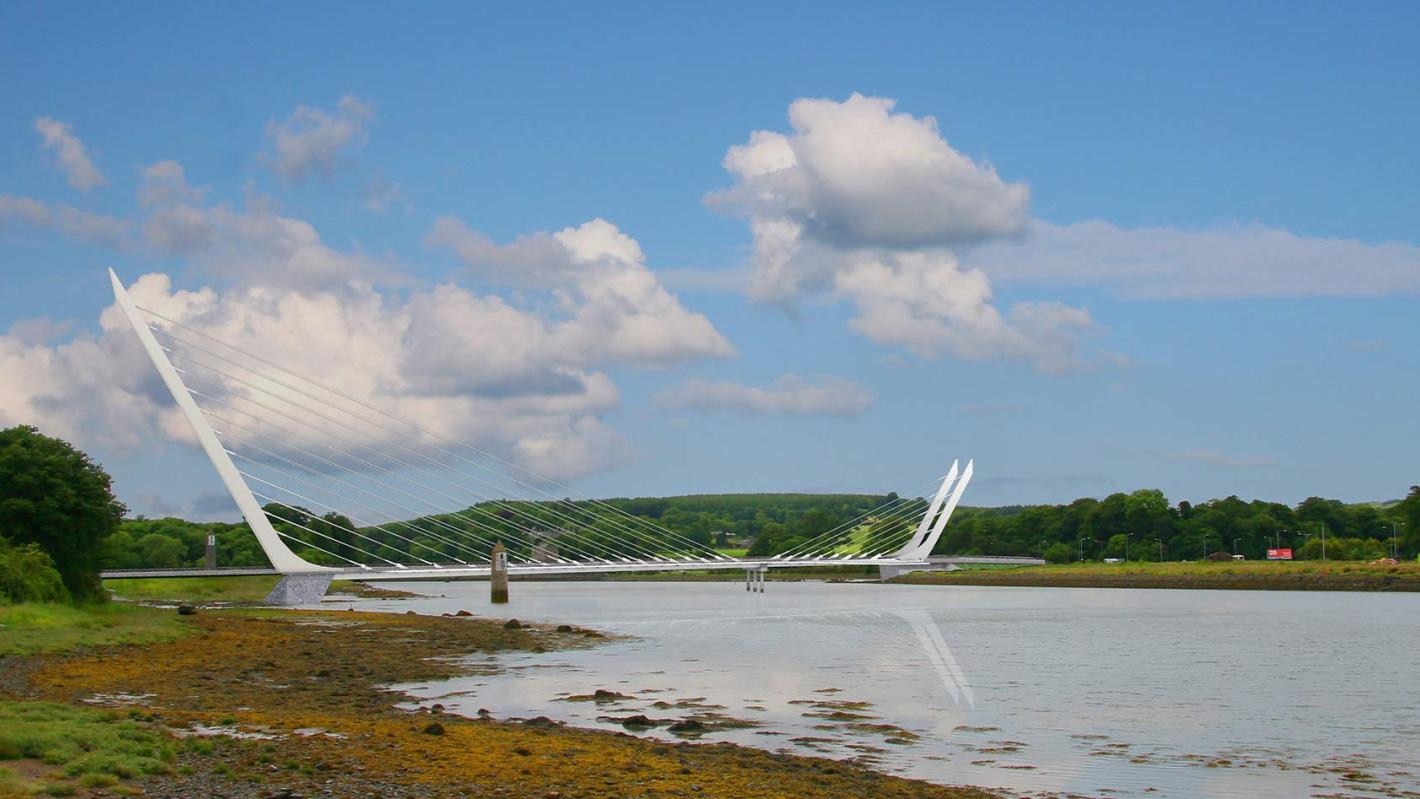
A model image of the Narrow Water Bridge when closed.
A game-changer for commerce, daily life and tourism

The Narrow Water Bridge project is a highly symbolic, cross-border infrastructure scheme that aims to provide a direct link between the Mourne Mountains in Co Down and the Cooley Peninsula in Co Louth.
The 195m, two-span, cable-stayed bridge will connect the A2 Newry to Warrenpoint dual carriageway with the R173 Omeath. It will provide for pedestrian, cycle, and vehicular access and allow navigational movements along the Newry River for accessing Victoria Lock and the Albert Basin.
When complete, the bridge will help strengthen North-South links, deepen connections between communities on both sides of the border and develop the wider Carlingford Lough area as a tourism destination.
ROD provided environmental assessment, planning, detailed design and construction contract procurement services for the project under an initial commission with Louth County Council that extends back to 2007.
ROD has been supported by:
Construction works commenced in June 2024, with BAM Ireland as the main contractor. ROD will administer and supervise the works through the construction and handover stages.
The €102 million landmark bridge, funded by the Shared Island Fund, is a long-standing commitment of the Irish government, reflected in the Programme for Government and New Decade, New Approach agreement.
The bridge is an iconic design, with a taller, longer, fixed southern span supported by a south-leaning pylon, paired with a shorter northern span supported by twin pylons. The northern span incorporates a rolling bascule mechanism, allowing it to open to river traffic. The south fixed cable-stayed span is 138m and northern cable-stayed rolling bascule (opening) span is 57m. The asymmetry of the span is reflected in the pylon heights, with the higher pylon located on the southern side of the crossing. The lower twin pylons on the northern side support the opening span.
The cable-stays are small diameter stays comprised of parallel strands with multiple layers of corrosion protection. Stay anchorages connect the cables stays to the pylon and the orthotropic steel deck. The south fixed pylon will be constructed from structural steel, consisting of an outer and inner steel skin infilled with concrete ballast. Similarly, the steel pylons supporting the bascule span will be infilled with concrete.
The south pylon and deck are fixed to the south abutment, forming an integral connection. The bridge will have a movement joint at the intermediate pier and at the north abutment, as required to allow the opening of the north bascule span and to accommodate bridge decks expansion and contraction.
